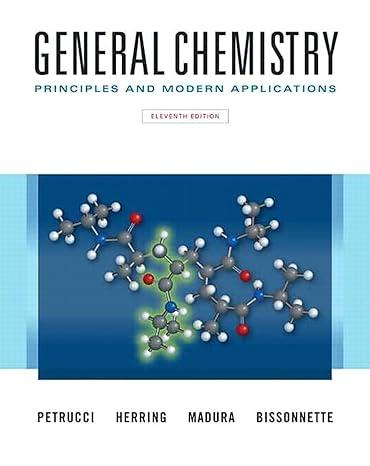The decomposition of aqueous hydrogen peroxide is catalyzed by Fe 3+ (aq). A proposed mechanism for this
Question:
The decomposition of aqueous hydrogen peroxide is catalyzed by Fe3+(aq). A proposed mechanism for this catalysis involves two reactions. In the first reaction, Fe3+ is reduced by H2O2. In the second, the iron is oxidized back to its original form, while hydrogen peroxide is reduced. Write an equation for the overall reaction and show that the overall reaction is indeed spontaneous. What are the minimum and maximum values of E° for a catalyst to function in this way? Which of the following should be able to catalyze the decomposition of hydrogen peroxide by the mechanism outlined here:
(a) Cu2+;
(b) Br2;
(c) Al3+;
(d) Au3+?
In the reaction between iodic acid and hydrogen peroxide in the presence of starch indicator, the color of the reaction mixture oscillates between deep blue and colorless. What is the basis of these changes in color? Will this oscillation of color continue indefinitely? Explain.
Step by Step Answer:

General Chemistry Principles And Modern Applications
ISBN: 9780132931281
11th Edition
Authors: Ralph Petrucci, Jeffry Madura, F. Herring, Carey Bissonnette





